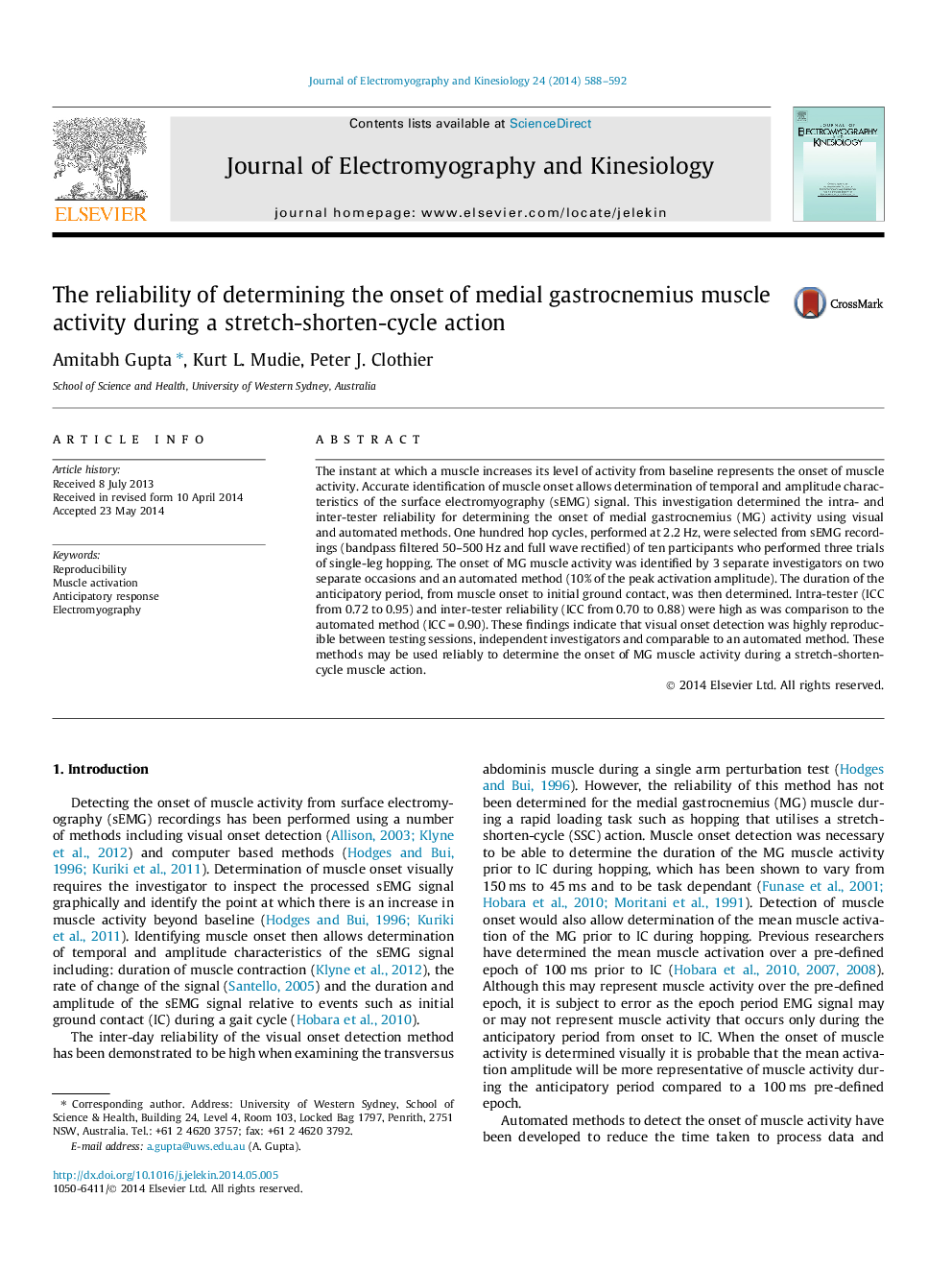| Article ID | Journal | Published Year | Pages | File Type |
|---|---|---|---|---|
| 4064552 | Journal of Electromyography and Kinesiology | 2014 | 5 Pages |
The instant at which a muscle increases its level of activity from baseline represents the onset of muscle activity. Accurate identification of muscle onset allows determination of temporal and amplitude characteristics of the surface electromyography (sEMG) signal. This investigation determined the intra- and inter-tester reliability for determining the onset of medial gastrocnemius (MG) activity using visual and automated methods. One hundred hop cycles, performed at 2.2 Hz, were selected from sEMG recordings (bandpass filtered 50–500 Hz and full wave rectified) of ten participants who performed three trials of single-leg hopping. The onset of MG muscle activity was identified by 3 separate investigators on two separate occasions and an automated method (10% of the peak activation amplitude). The duration of the anticipatory period, from muscle onset to initial ground contact, was then determined. Intra-tester (ICC from 0.72 to 0.95) and inter-tester reliability (ICC from 0.70 to 0.88) were high as was comparison to the automated method (ICC = 0.90). These findings indicate that visual onset detection was highly reproducible between testing sessions, independent investigators and comparable to an automated method. These methods may be used reliably to determine the onset of MG muscle activity during a stretch-shorten-cycle muscle action.
